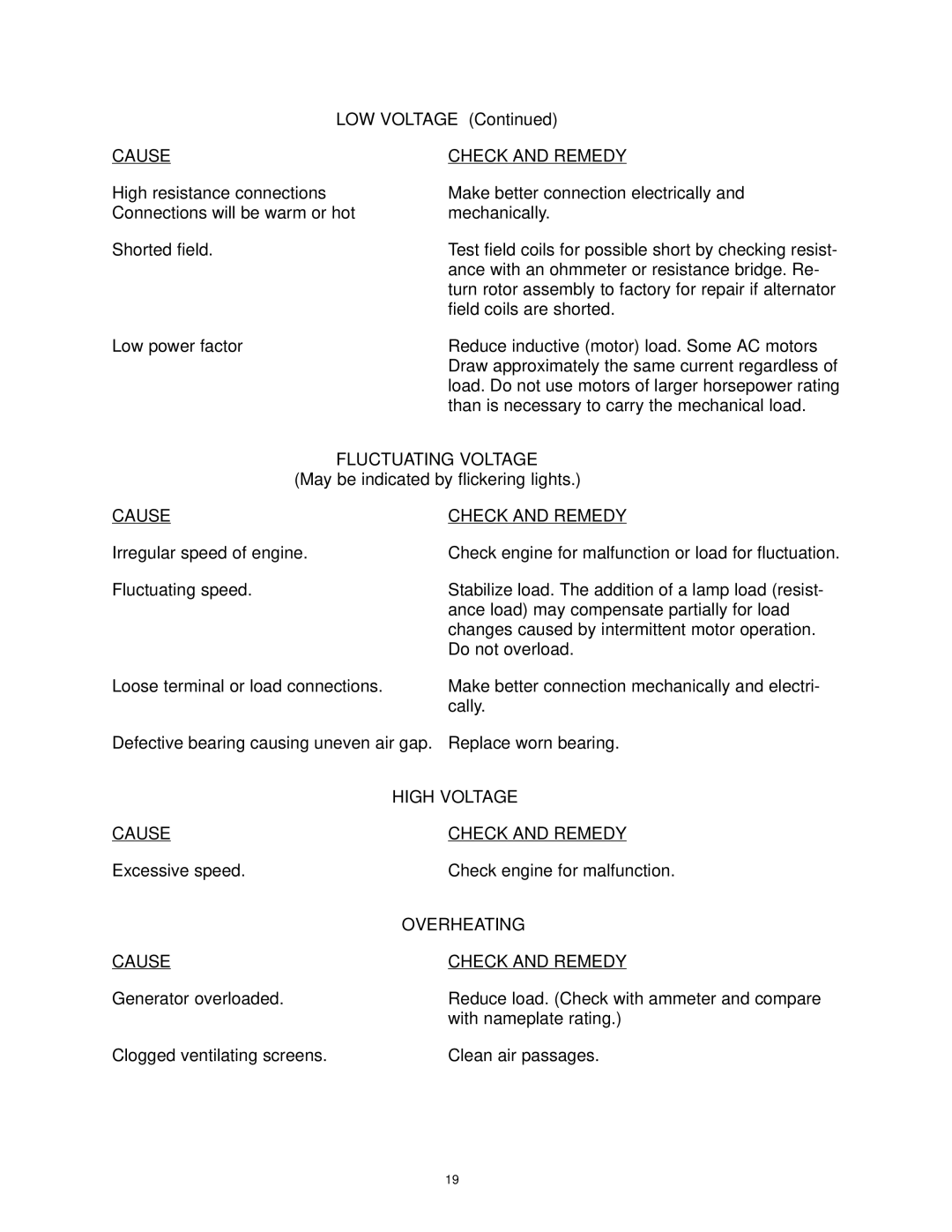LOW VOLTAGE (Continued)
CAUSE | CHECK AND REMEDY |
High resistance connections– | Make better connection electrically and |
Connections will be warm or hot | mechanically. |
Shorted field. | Test field coils for possible short by checking resist- |
| ance with an ohmmeter or resistance bridge. Re- |
| turn rotor assembly to factory for repair if alternator |
| field coils are shorted. |
Low power factor | Reduce inductive (motor) load. Some AC motors |
| Draw approximately the same current regardless of |
| load. Do not use motors of larger horsepower rating |
| than is necessary to carry the mechanical load. |
| FLUCTUATING VOLTAGE |
(May be indicated by flickering lights.) | |
CAUSE | CHECK AND REMEDY |
Irregular speed of engine. | Check engine for malfunction or load for fluctuation. |
Fluctuating speed. | Stabilize load. The addition of a lamp load (resist- |
| ance load) may compensate partially for load |
changes caused by intermittent motor operation. Do not overload.
Loose terminal or load connections.
Make better connection mechanically and electri- cally.
Defective bearing causing uneven air gap. Replace worn bearing.
| HIGH VOLTAGE |
CAUSE | CHECK AND REMEDY |
Excessive speed. | Check engine for malfunction. |
| OVERHEATING |
CAUSE | CHECK AND REMEDY |
Generator overloaded. | Reduce load. (Check with ammeter and compare |
| with nameplate rating.) |
Clogged ventilating screens. | Clean air passages. |
19
